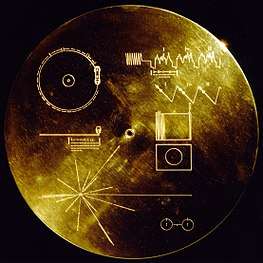String Quartet No. 13 (Beethoven)
The String Quartet No. 13 in B♭ major, Op. 130, by Ludwig van Beethoven was completed (in its final form) in November 1826.[1] The number traditionally assigned to it is based on the order of its publication; it is actually Beethoven's 14th quartet in order of composition. It was premiered (in its original form) in March 1826 by the Schuppanzigh Quartet and dedicated to Nikolai Galitzin on its publication in 1827.
| String Quartet | |
|---|---|
| No. 13 | |
| Late string quartet by Ludwig van Beethoven | |
 Coversheet of Beethoven's Op. 130 as published in Berlin on 2 June 1827 | |
| Key | B♭ major |
| Opus | Op. 130 |
| Composed | 1825 |
| Dedication | Nikolai Galitzin |
| Published | 1827 |
| Duration | c. 45 min |
| Movements | Six |
| Premiere | |
| Date | March 1826 |
| Performers | Schuppanzigh Quartet |
Movements
Beethoven originally wrote the work in six movements, lasting 42–50 minutes, as follows:
- Adagio, ma non troppo – Allegro (B♭ major)
- Presto (B♭ minor)
- Andante con moto, ma non troppo. Poco scherzoso (D♭ major)
- Alla danza tedesca. Allegro assai (G major)
- Cavatina. Adagio molto espressivo (E♭ major)
- Große Fuge (Grande Fugue Op.133): Ouverture. Allegro – Meno mosso e moderato – Allegretto – Fuga. [Allegro] – Meno mosso e moderato – Allegro molto e con brio – Allegro (B♭)
(Nomenclature: "danza tedesca" means "German dance", "Cavatina" a short and simple song, and "Große Fuge" means "Great Fugue" or "Grand Fugue".)
The work is unusual among quartets in having six movements. They follow the pattern of movements seen in the Ninth Symphony and occasionally elsewhere in Beethoven's work (opening, dance movement, slow movement, finale), except that the middle part of the cycle is repeated: opening, dance movement, slow movement, dance movement, slow movement, finale.
New finale
Negative reaction to the work's final movement at the first performance, and his publisher's urging, led Beethoven to write a substitute for the final movement, a contradanse much shorter and lighter than the enormous Große Fuge it replaced. This new finale was written between September and November 1826 and is the last complete piece of music Beethoven composed before his death in March 1827. It is marked:
- Finale: Allegro in B♭ major
Beethoven never witnessed a performance of the quartet in its final form; it was premiered on 22 April, 1827, nearly a month after his death.
The original finale was published separately under the title Große Fuge as opus 133. Modern performances sometimes follow the composer's original intentions, leaving out the substitute finale and concluding with the fugue.[2] Robert Simpson argues that Beethoven's intentions are best served by playing the quartet as a seven-movement work, with the Große Fuge followed by the replacement finale.[3]
In media
The Cavatina (performed by the Budapest String Quartet) is the final piece on the Voyager Golden Record, a phonograph record containing a broad sample of Earth's sounds, languages, and music sent into outer space in 1977 with the two unmanned Voyager probes.[4] It immediately follows after the gospel blues song "Dark Was the Night, Cold Was the Ground" by Blind Willie Johnson, a blind and a deaf musician side by side. Voyager 1 entered interstellar space in 2012; Voyager 2 followed suit in 2018.
The Cavatina also appears in "Love and War", an episode from the sixth season of M*A*S*H, in the background as Hawkeye has dinner with an aristocratic Korean woman.
See also
- Late String Quartets (Beethoven)
Notes
- "beethtranscending". ludwig0van0beethoven.tripod.com.
- Kahn, Robert (2010). Beethoven and the Grosse Fuge: Music, Meaning, and Beethoven's Most Difficult Work. Scarecrow Press. p. 3-6. ISBN 1461664055. Retrieved 16 September 2017.
- http://robertsimpson.info/writings/simpsons-writings/beethoven-string-quartets.html#op130op133%5B%5D
- "Voyager – Music on the Golden Record". voyager.jpl.nasa.gov.
External links
- String Quartet No. 13: Scores at the International Music Score Library Project (IMSLP)
- Performance of the quartet with the Große Fuge by the Orion String Quartet from the Isabella Stewart Gardner Museum in MP3 format
